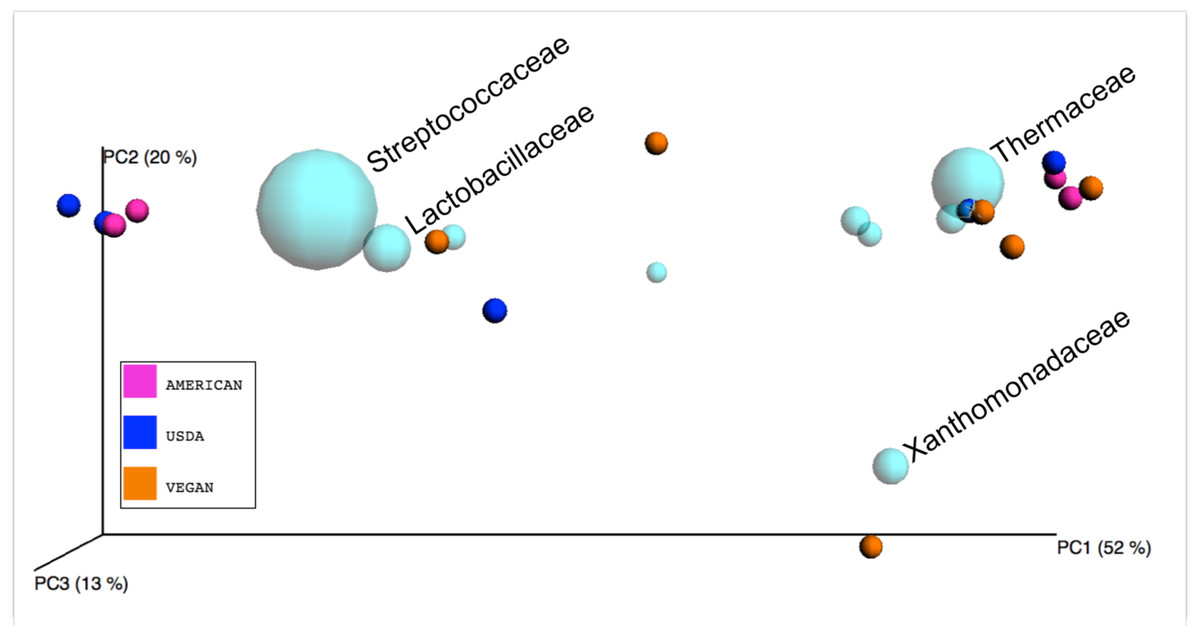This is a guest post by Katie Dahlhausen, a PhD Student in my lab.
Koala populations across Australia are on a rapid decline due to many culprits including habitat loss, being hit by cars, attacks by dogs, and the Chlamydia infection. Yes, that’s right, Chlamydia. And when koalas are brought into wildlife hospitals, they are treated with antibiotics to cure their Chlamydia infection. Although ridding koalas of Chlamydia, the antibiotics also kill off important gut microbes that are essential to the koala’s life biology. Koalas eat a diet solely of eucalyptus leaves, which would be poisonous to the koalas if it wasn’t for the tannin-protein-complex-degrading enterobacteria that break down the toxic components of the koala’s diet. Brace yourself, because the koala’s biology gets even more interesting! Mother koalas feed their young joeys a substance called pap, a fecal matter more concentrated in nutrients and microbes than normal feces. This form of a natural fecal transplant allows the joeys to colonize the critical gut microbes necessary for them to eat noxious eucaplytus leaves. But what does this mean for joeys whose mothers have been administered antibiotics?
My name is Katie Dahlhausen and I am A PhD student in Jonathan’s lab. I am crowd-funding a project to study this fascinating koala biology, as well as investigate alternative infectious disease treatment where antibiotics are not a viable option. Want to help out these adorable critters? You can support the Indiegogo campaign here, which is live until June 16, 2015. More information about the project is available on the crowdfunding page, and in these recent articles published in Scientific American and the Washington Post.
So how did I get into this project? Well, When I was at the Australia Wildlife Zoo in Australia last September, there was a sign next to the koala exhibit with picture of a joey whose mouth was covered in a brown substance. The sign read something like "It's not chocolate!" and explained the pap part of the koala's biology.
The moment I read this I knew there was some fascinating microbiology questions that were begging to be answered. While researching the microbiology behind this behavior, I found a study the recorded the detrimental effects antibiotics had on a koala's eating habit and inability to maintain weight, but the question of how antibiotics were effecting the microbial composition of koala's guts remained unsolved. That is how this whole project started. Like most people, I think koalas are cute and appreciate how iconic they are to Australia. Otherwise, I'm not very attached to koalas - they are actually quite mean and antisocial! But koalas are a fantastic model system - one food source, plenty of sampling opportunities (in Australia at least), frequently given antibiotics, and clear mechanism of the transfer of microbes from mother to offspring. The implications of the study are vast, but are aimed at the care for animals in captivity and foster changes in how/when we administer antibiotics.
Koala populations across Australia are on a rapid decline due to many culprits including habitat loss, being hit by cars, attacks by dogs, and the Chlamydia infection. Yes, that’s right, Chlamydia. And when koalas are brought into wildlife hospitals, they are treated with antibiotics to cure their Chlamydia infection. Although ridding koalas of Chlamydia, the antibiotics also kill off important gut microbes that are essential to the koala’s life biology. Koalas eat a diet solely of eucalyptus leaves, which would be poisonous to the koalas if it wasn’t for the tannin-protein-complex-degrading enterobacteria that break down the toxic components of the koala’s diet. Brace yourself, because the koala’s biology gets even more interesting! Mother koalas feed their young joeys a substance called pap, a fecal matter more concentrated in nutrients and microbes than normal feces. This form of a natural fecal transplant allows the joeys to colonize the critical gut microbes necessary for them to eat noxious eucaplytus leaves. But what does this mean for joeys whose mothers have been administered antibiotics?
My name is Katie Dahlhausen and I am A PhD student in Jonathan’s lab. I am crowd-funding a project to study this fascinating koala biology, as well as investigate alternative infectious disease treatment where antibiotics are not a viable option. Want to help out these adorable critters? You can support the Indiegogo campaign here, which is live until June 16, 2015. More information about the project is available on the crowdfunding page, and in these recent articles published in Scientific American and the Washington Post.
So how did I get into this project? Well, When I was at the Australia Wildlife Zoo in Australia last September, there was a sign next to the koala exhibit with picture of a joey whose mouth was covered in a brown substance. The sign read something like "It's not chocolate!" and explained the pap part of the koala's biology.
The moment I read this I knew there was some fascinating microbiology questions that were begging to be answered. While researching the microbiology behind this behavior, I found a study the recorded the detrimental effects antibiotics had on a koala's eating habit and inability to maintain weight, but the question of how antibiotics were effecting the microbial composition of koala's guts remained unsolved. That is how this whole project started. Like most people, I think koalas are cute and appreciate how iconic they are to Australia. Otherwise, I'm not very attached to koalas - they are actually quite mean and antisocial! But koalas are a fantastic model system - one food source, plenty of sampling opportunities (in Australia at least), frequently given antibiotics, and clear mechanism of the transfer of microbes from mother to offspring. The implications of the study are vast, but are aimed at the care for animals in captivity and foster changes in how/when we administer antibiotics.































